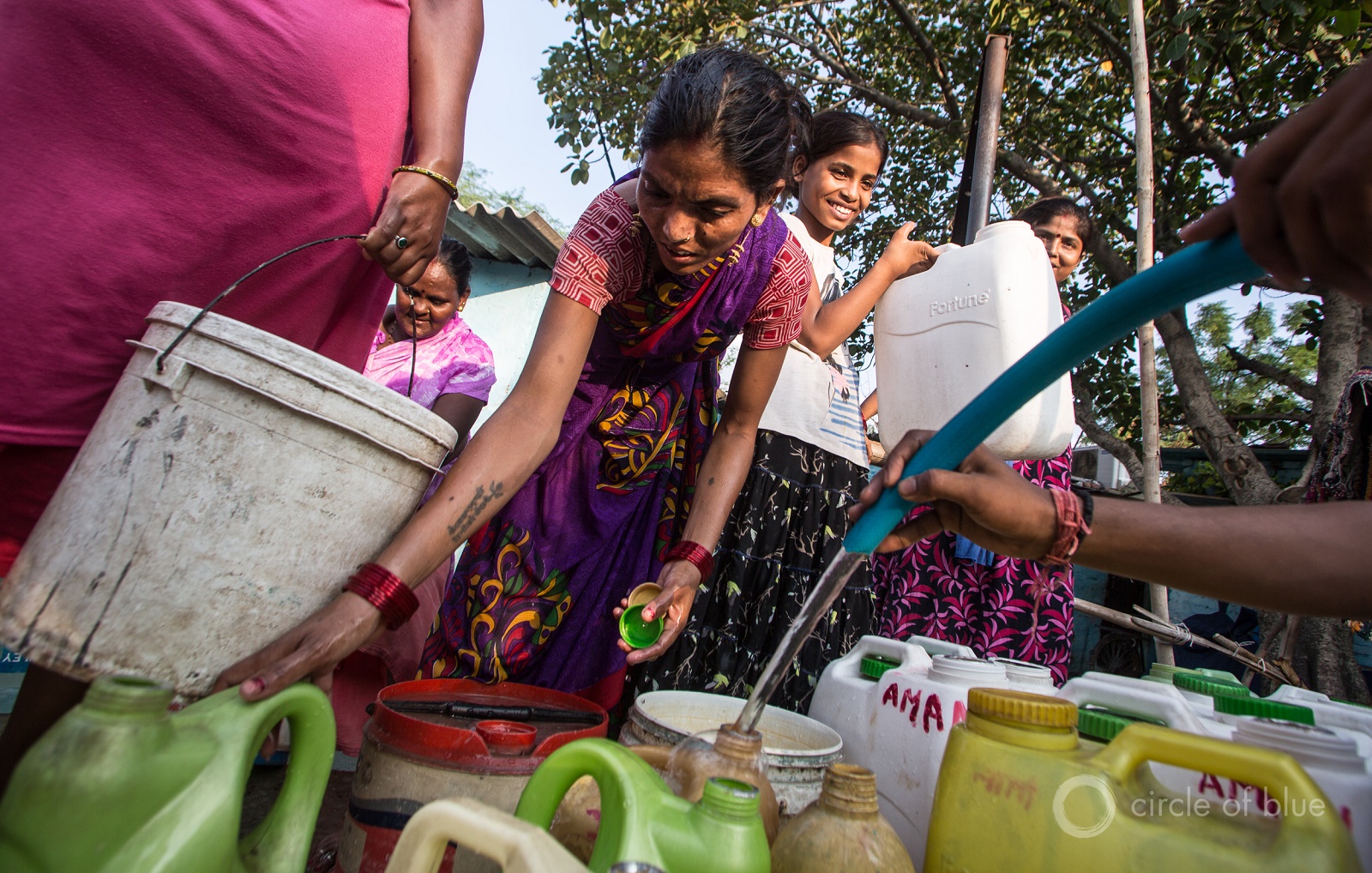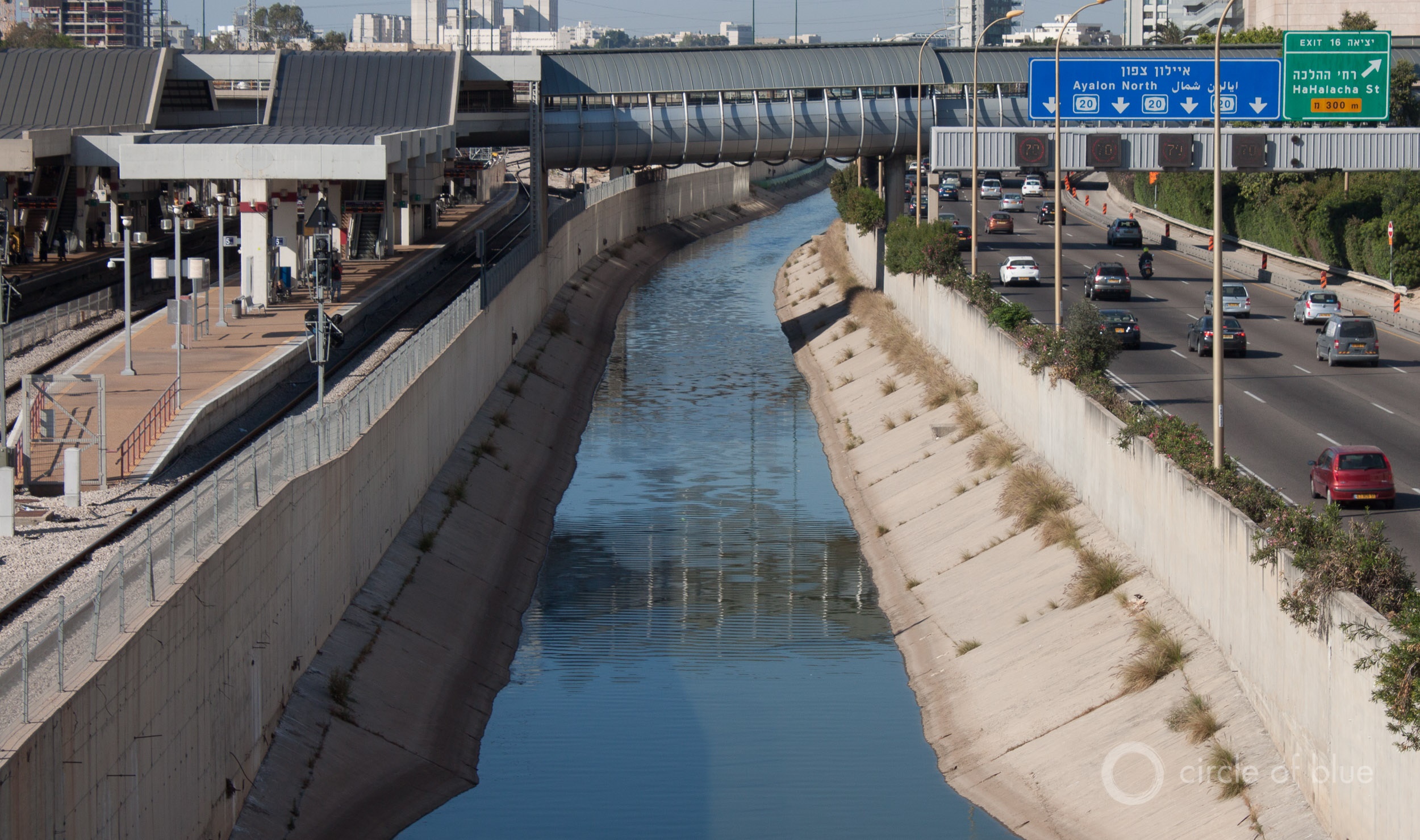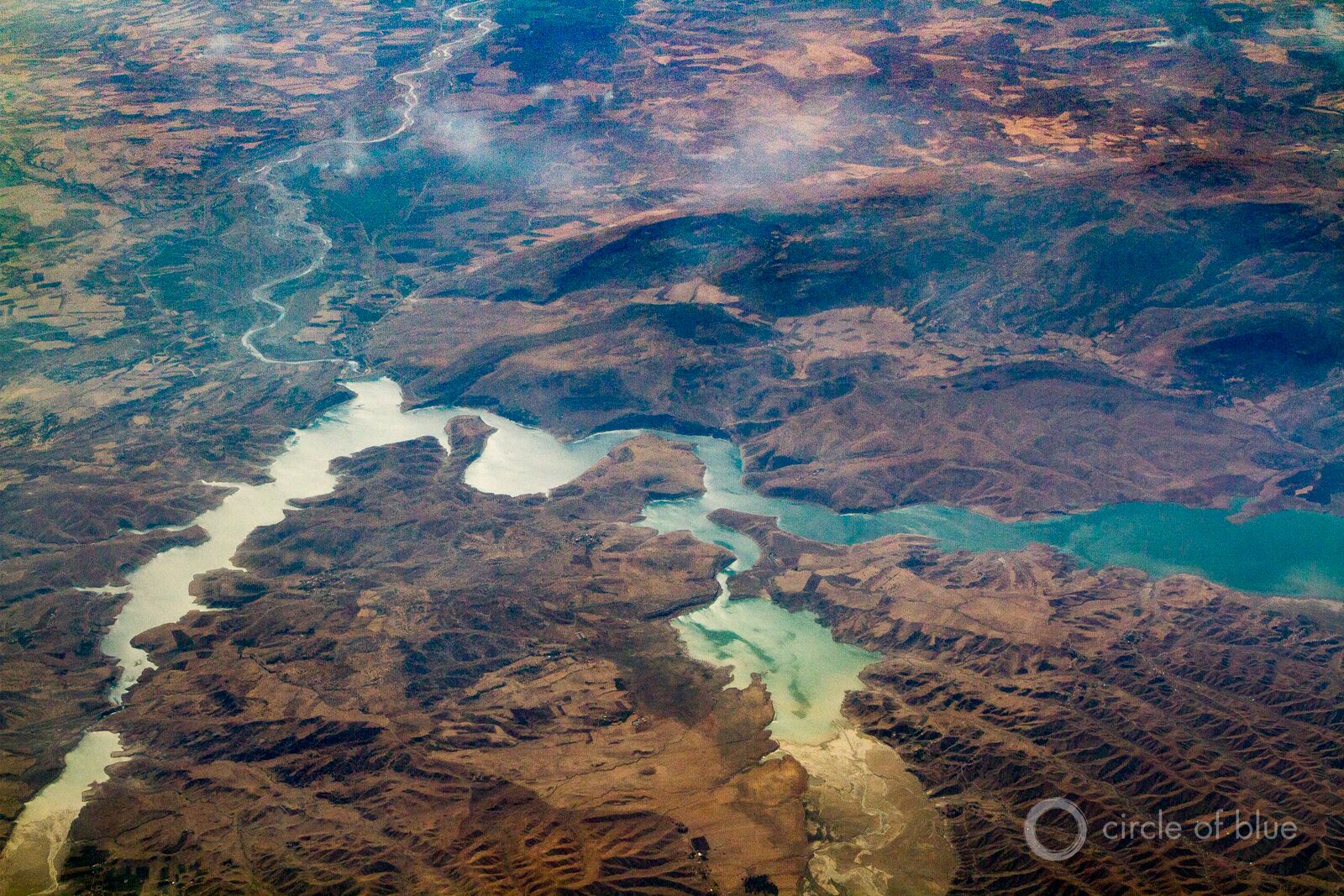In 2018, water sparked quarrels across the globe, from the mountains of Central Asia to the world’s driest desert. Water systems were also a casualty and target of conflict. In Eastern Ukraine, water infrastructure was shelled repeatedly. In Libya, a desalination facility that serves a city of 125,000 people was halted for weeks due to intense fighting. In war zones worldwide, millions of people live without reliable access to clean water.
The risks are substantial. The United Nations warns that more countries are involved in conflict than at any time in the past 30 years. Undoubtedly, water will continue to be intertwined with social and political tension. Below are five water-related hot spots to watch in 2019.

Women in Delhi wait for water at a tap that runs for two hours each day — one hour in the morning and one in the evening. Photo © J. Carl Ganter / Circle of Blue
1.Water Disputes in India
Sweltering temperatures and water shortages gripped much of India last year. One city, Shimla, ran out of water for nearly three weeks in May, prompting quarrels and mobs. In New Delhi, water disputes were responsible for several deaths.Water-related unrest is likely to continue. Drought is spreading across the country again, and has already increased tension in Maharashtra, India’s second-most populous state. Conflicts pit individuals against local officials, state against state, and India against its neighbors, China and Pakistan.
2. Intercommunal Violence in East and West Africa
Tribal clashes shook parts of eastern Africa in 2018, including in Kenya’s Rift Valley and Ethiopia’s Gedeo and West Guji zones. Farmer-herder conflict was a major issue in the Sahel region, with particularly violent attacks reported in Nigeria and Mali. The violence is influenced by politics. But competition for water and pasture is emerging as a key factor.
2018 closed with a violent attack that left more than 40 dead in northern Mali. As climate change fuels further desertification and water shortfalls throughout Africa, tensions among tribes, farmers, and herders are likely to increase.

A half century ago, Israel built canals to move water from the Jordan River to the coasts. Today, desalination plants send freshwater inland. Photo © Brett Walton / Circle of Blue
3.Water Crisis in the Gaza Strip
The water crisis in the Gaza Strip is so dire that experts warn the Palestinian territory may be uninhabitable by 2020. A mere 3 percent of Gaza’s water is fit for human consumption, and the territory deposits vast amounts of raw sewage into the Mediterranean each day, jeopardizing the source water for desalination plants. Improvement is unlikely if tensions remain between Israel and Hamas, the de facto governing authority of the Gaza Strip. As political instability continues to overwhelm the region, the residents of Gaza face greater water and health emergencies every day.

An aerial of the Tigris- Euphrates. Photo © J. Carl Ganter / Circle of Blue
4.Water-Related Protests in Iraq
Last year, thousands of people in Basra, fell ill after drinking from the city’s water system, which is heavily tainted by sewage and salt. Beginning in September, angry protesters took to the streets, decrying toxic water, chronic unemployment, and government neglect.The most recent demonstration was held in mid-December, and tensions remain high. Water pollution and shortages are pressing issues in other parts of Iraq as well. Prolonged drought forced the government to ban the planting of summer crops last year, another move that inflamed protests. Much of the country’s infrastructure, including dams, canals, and pipelines, is also still in ruins after years of fighting Islamic State.
5. Water and Cholera in Yemen
Water access in Yemen remains abysmal. Water and sanitation infrastructure is in shambles as the country approaches its fourth year of conflict. In 2018, the United Nations estimated that 16 million Yemenis, or roughly 55 percent of the population, lacked regular access to water and basic sanitation. A tenuous truce protecting Yemen’s Hodeidah Port was brokered in December 2018, but antagonism between the warring parties remains. Even if Yemen’s war ends, reconstruction will likely take decades, leaving the country prone to waterborne diseases like cholera, which sickened more than 1 million in 2017 and began to resurge at the end of 2018.
Kayla Ritter is a recent graduate of Michigan State University, where she studied International Relations and Teaching English to Speakers of Other Languages. She is currently based in Manton, Michigan. Kayla enjoys running, writing, and traveling. Contact Kayla Ritter




